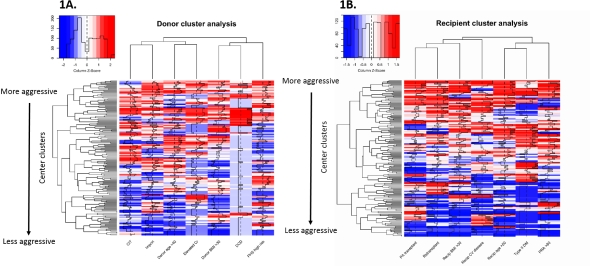Maximizing Utilization in Pancreas Transplantation: Phenotypic CharacteristicsDifferentiating Aggressive from Nonaggressive Transplant Centers
1Surgery, University of Minnesota, Minneapolis, MN
2Biostatistics, University of Minnesota, Minneapolis, MN.
Meeting: 2018 American Transplant Congress
Abstract number: D282
Keywords: Donors, marginal, Pancreas transplantation, Prediction models
Session Information
Session Name: Poster Session D: Late Breaking
Session Type: Poster Session
Date: Tuesday, June 5, 2018
Session Time: 6:00pm-7:00pm
 Presentation Time: 6:00pm-7:00pm
Presentation Time: 6:00pm-7:00pm
Location: Hall 4EF
OBJECTIVE: Given the increasing shortage of deceased donor pancreas allografts and their declining acceptance rate, maximizing utilization requires a balance between donor selection and transplant center aggressiveness. METHODS: Using the Scientific Registry of Transplant Recipients, we studied 28,522 deceased-donor adult pancreas transplants from January 1990 through December 2015. Using demographic factors indicative of aggressiveness in donor and recipient selection, we created composite scores for center donor and center recipient aggressiveness. We compared outcomes of transplants of low (> 1 SD below mean), medium (+/- 1 SD from mean), and high (> 1 SD above mean) aggressiveness centers using bivariate and multivariable regression. RESULTS: Center volume correlated moderately with donor (rho=0.433) and recipient (rho=0.270) aggressiveness. Aggressive centers were primarily found in UNOS regions 2 and 7. According to cluster analysis, aggressive centers were more likely to accept imported organs, allografts with a longer preservation time or that were from cardiac-death or high-risk donors, and donors with a higher terminal creatinine (Figure 1A); and transplant recipients in need of a solitary pancreas, retransplants, BMI>30, age>50 and PRA>80 (Figure 1B). In multivariable analysis, graft survival for medium (HR 1.02, CI 0.91-0.94) and high donor aggressiveness (HR 1.00, CI 0.88-1.14) centers were not different from low risk donor centers; whereas graft survival from medium (HR 0.77, CI 0.67-0.88) and high (HR 0.80, CI 0.69-0.92) recipient aggressiveness performed better than low risk recipient centers. There was a clear volume effect, with high volume centers (>20 transplants/yr, HR 0.78, CI 0.71-0.86) performing better than low volume centers. CONCLUSIONS: Center practice patterns using higher risk donors and recipients did not negatively affect outcomes. This effect is, in part, likely mediated through efficiencies gained with the increased transplant volumes of these centers.
CITATION INFORMATION: Serrano O. K., Vock D. M., Dunn T. B., Kandaswamy R., Finger E. B. Maximizing Utilization in Pancreas Transplantation: Phenotypic CharacteristicsDifferentiating Aggressive from Nonaggressive Transplant Centers Am J Transplant. 2017;17 (suppl 3).
To cite this abstract in AMA style:
Serrano OK, Vock DM, Dunn TB, Kandaswamy R, Finger EB. Maximizing Utilization in Pancreas Transplantation: Phenotypic CharacteristicsDifferentiating Aggressive from Nonaggressive Transplant Centers [abstract]. https://atcmeetingabstracts.com/abstract/maximizing-utilization-in-pancreas-transplantation-phenotypic-characteristicsdifferentiating-aggressive-from-nonaggressive-transplant-centers/. Accessed December 16, 2025.« Back to 2018 American Transplant Congress

